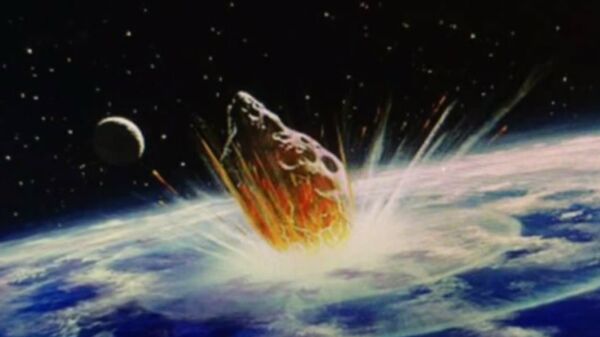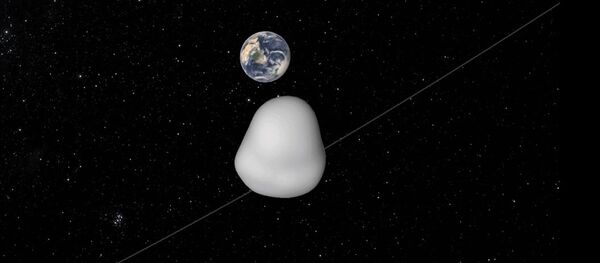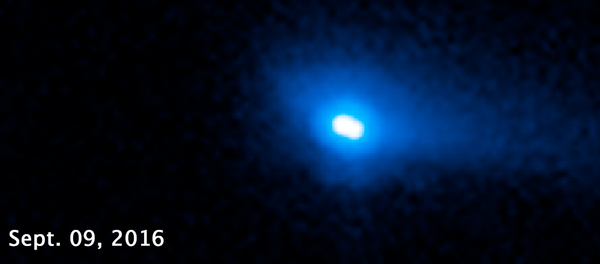Asteroid 2012 TC4, estimated to be 50 to 100 feet in length, came within 27,300 miles of Earth earlier in October, which is way too close for comfort. By comparison, the moon is never closer than 363,000 miles from Earth, and the most distant human satellite still in operation, NASA's Interstellar Boundary Explorer, is about 38,500 miles away.
You can rest easy, though. Astronomers have modeled the projectile's path and found there's virtually no chance of it colliding with Earth during its next flyby in 2050.
But the flyby after that, in 2079, is another story.
"We know today that it will also not hit the Earth in the year 2050, but the close flyby in 2050 might deflect the asteroid such that it could hit the Earth in the year 2079," Rüdiger Jehn of the European Space Agency told AFP.
It's not a sure thing: the ESA places the chances of a collision at about one in 750 — not long enough odds for many. 2012 TC4 gets its name from its first flyby in 2012, when it cruised about 60,000 miles from Earth.
But when it comes to potentially hazardous asteroids, it's better not to take many chances. "Scientists have always appreciated knowing when an asteroid will make a close approach to and safely pass the Earth because they can make preparations to collect data to characterise and learn as much as possible about it," said Michael Kelley, a NASA scientist who led the monitoring of TC4 in a statement.
"This time we are adding in another layer of effort, using this asteroid flyby to test the worldwide asteroid detection and tracking network, assessing our capability to work together in response to finding a potential real asteroid threat."
"Asteroid trackers are using this flyby to test the worldwide asteroid detection and tracking network, assessing our capability to work together in response to finding a potential real asteroid-impact threat," Kelley added.
To give you a sense of the kind of destruction TC4 could cause if it hits Earth, in 2013 the Chelyabinsk meteor burst over Russia, causing $33 million in damages and injuring almost 1,500 people, but killing nobody. That asteroid had a comparable diameter to TC4.
So it won't end the world, but if it strikes a populated area, it could ruin a lot of people's days.





